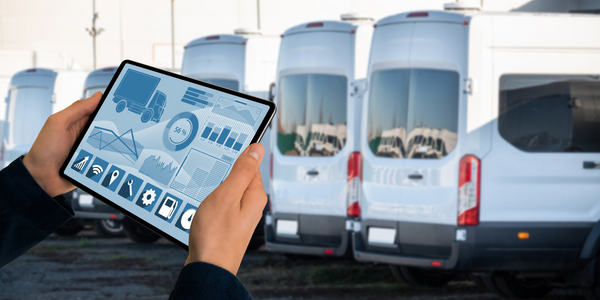Customer Company Size
Mid-size Company
Region
- America
- Middle East
Country
- United States
- United Arab Emirates
Product
- Falcon Complete
- Falcon OverWatch
- Falcon Prevent
- Falcon Insight
- Falcon Discover
Tech Stack
- Managed Detection and Response
- Endpoint Detection and Response
- Threat Hunting
Implementation Scale
- Enterprise-wide Deployment
Impact Metrics
- Cost Savings
- Customer Satisfaction
- Productivity Improvements
Technology Category
- Cybersecurity & Privacy - Endpoint Security
- Cybersecurity & Privacy - Intrusion Detection
- Cybersecurity & Privacy - Security Compliance
Applicable Industries
- Transportation
Applicable Functions
- Business Operation
Use Cases
- Intrusion Detection Systems
- Remote Asset Management
Services
- Cybersecurity Services
- System Integration
About The Customer
Virgin Hyperloop is a private company established in 2014 with the mission to revolutionize mass transportation. The company aims to develop a new mode of transportation that moves freight and people quickly, safely, and directly from origin to destination without direct carbon emissions. Virgin Hyperloop envisions infrastructure that is faster, more scalable, less expensive, and more environmentally friendly than high-speed rail. The company employs about 300 people and has offices in Los Angeles, Las Vegas, and Dubai. As a startup, Virgin Hyperloop operates with a lean, investor-fed budget, which limits its ability to hire a large IT department. Despite its small size, the company has a big vision and a large profile, attracting significant attention to its groundbreaking intellectual property. Virgin Hyperloop's mission is to reinvent public transportation by developing a system where people travel in pods through a vacuum tube, offering the potential for significant economic and environmental benefits.
The Challenge
Virgin Hyperloop, a private company founded in 2014, is developing a new mode of mass transportation that promises to move freight and people quickly, safely, and directly from origin to destination without direct carbon emissions. However, as a startup with about 300 employees and offices in Los Angeles, Las Vegas, and Dubai, the company faces significant security challenges. These include protecting its revolutionary intellectual property (IP) with a small IT team, managing a fast-moving startup environment with a highly mobile staff, and operating under a limited budget typical of startups. The company's cutting-edge technology and high-profile IP attract unwanted attention from hackers, including state actors, making security a top priority. Additionally, the company aims to cut costs and streamline its cybersecurity operations, which were previously a mix of various security products and services that were costly and inefficient.
The Solution
To address its security challenges, Virgin Hyperloop turned to CrowdStrike's Falcon Complete managed endpoint security solution. This decision was driven by the need to streamline the company's cybersecurity operations and reduce costs. The Falcon Complete package allowed Virgin Hyperloop to eliminate extraneous security applications and cancel its professional services retainer for malware remediation. The solution provided everything the company needed to protect its data and intellectual property. As a relatively small startup, Virgin Hyperloop does not have the budget for a full-time security analyst. Therefore, the company relies on CrowdStrike's Falcon OverWatch threat hunting and Falcon Complete managed detection and response capabilities to augment its security team. This partnership allows Virgin Hyperloop to free up its service desk to handle employee tickets, saving time and costs. The close relationship with CrowdStrike adds value by providing real-time threat response and continuous improvements to the security platform, ensuring that Virgin Hyperloop remains secure while focusing on its core mission.
Operational Impact
Quantitative Benefit

Case Study missing?
Start adding your own!
Register with your work email and create a new case study profile for your business.
Related Case Studies.

Case Study
Airport SCADA Systems Improve Service Levels
Modern airports are one of the busiest environments on Earth and rely on process automation equipment to ensure service operators achieve their KPIs. Increasingly airport SCADA systems are being used to control all aspects of the operation and associated facilities. This is because unplanned system downtime can cost dearly, both in terms of reduced revenues and the associated loss of customer satisfaction due to inevitable travel inconvenience and disruption.

Case Study
IoT-based Fleet Intelligence Innovation
Speed to market is precious for DRVR, a rapidly growing start-up company. With a business model dependent on reliable mobile data, managers were spending their lives trying to negotiate data roaming deals with mobile network operators in different countries. And, even then, service quality was a constant concern.

Case Study
Digitize Railway with Deutsche Bahn
To reduce maintenance costs and delay-causing failures for Deutsche Bahn. They need manual measurements by a position measurement system based on custom-made MEMS sensor clusters, which allow autonomous and continuous monitoring with wireless data transmission and long battery. They were looking for data pre-processing solution in the sensor and machine learning algorithms in the cloud so as to detect critical wear.

Case Study
Cold Chain Transportation and Refrigerated Fleet Management System
1) Create a digital connected transportation solution to retrofit cold chain trailers with real-time tracking and controls. 2) Prevent multi-million dollar losses due to theft or spoilage. 3) Deliver a digital chain-of-custody solution for door to door load monitoring and security. 4) Provide a trusted multi-fleet solution in a single application with granular data and access controls.

Case Study
Vehicle Fleet Analytics
Organizations frequently implement a maintenance strategy for their fleets of vehicles using a combination of time and usage based maintenance schedules. While effective as a whole, time and usage based schedules do not take into account driving patterns, environmental factors, and sensors currently deployed within the vehicle measuring crank voltage, ignition voltage, and acceleration, all of which have a significant influence on the overall health of the vehicle.In a typical fleet, a large percentage of road calls are related to electrical failure, with battery failure being a common cause. Battery failures result in unmet service agreement levels and costly re-adjustment of scheduled to provide replacement vehicles. To reduce the impact of unplanned maintenance, the transportation logistics company was interested in a trial of C3 Vehicle Fleet Analytics.

Case Study
3M Gains Real-Time Insight with Cloud Solution
The company has a long track record of innovative technology solutions. For example, 3M helps its customers optimize parking operations by automating fee collection and other processes. To improve support for this rapidly expanding segment, 3M needed to automate its own data collection and reporting. The company had recently purchased the assets of parking, tolling, and automatic license plate reader businesses, and required better insight into these acquisitions. Chad Reed, Global Business Manager for 3M Parking Systems, says, “With thousands of installations across the world, we couldn’t keep track of our software and hardware deployments, which made it difficult to understand our market penetration.” 3M wanted a tracking application that sales staff could use to get real-time information about the type and location of 3M products in parking lots and garages. So that it could be used on-site with potential customers, the solution would have to provide access to data anytime, anywhere, and from an array of mobile devices. Jason Fox, Mobile Application Architect at 3M, upped the ante by volunteering to deliver the new app in one weekend. For Fox and his team, these requirements meant turning to the cloud instead of an on-premises datacenter. “My first thought was to go directly to the cloud because we needed to provide access not only to our salespeople, but to resellers who didn’t have access to our internal network,” says Fox. “The cloud just seemed like a logical choice.”







